_We may earn revenue from the products available on this page and participate in affiliate programs. Learn more ›
_
Best Topwater
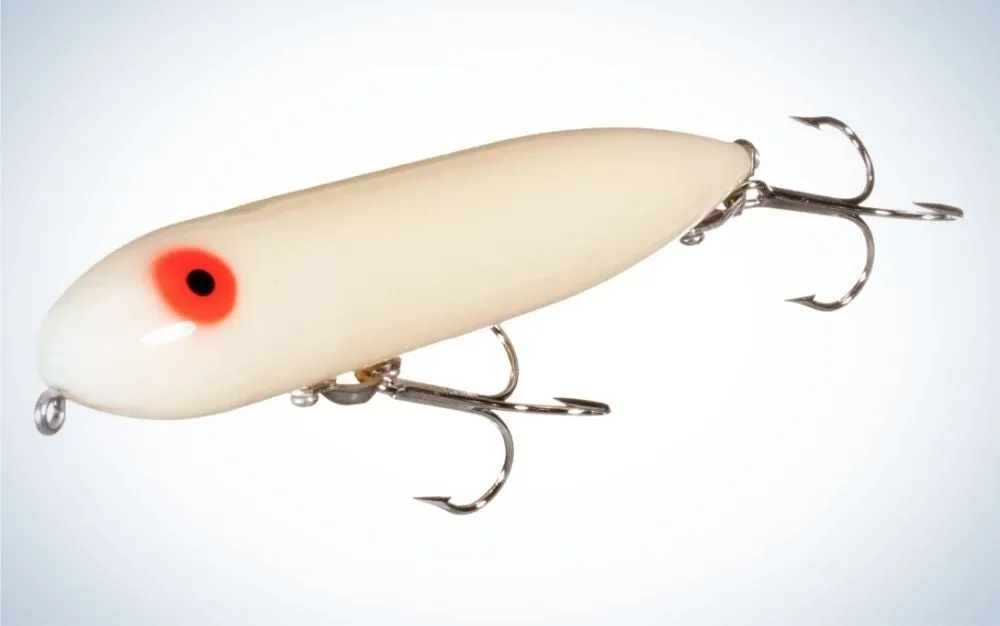
Heddon’s Zara Spook
LEARN MORE
Summary
This classic’s large profile and easy side-to-side action create an easy target for aggressive bass, whether the water is calm or choppy.
Best Spinnerbait
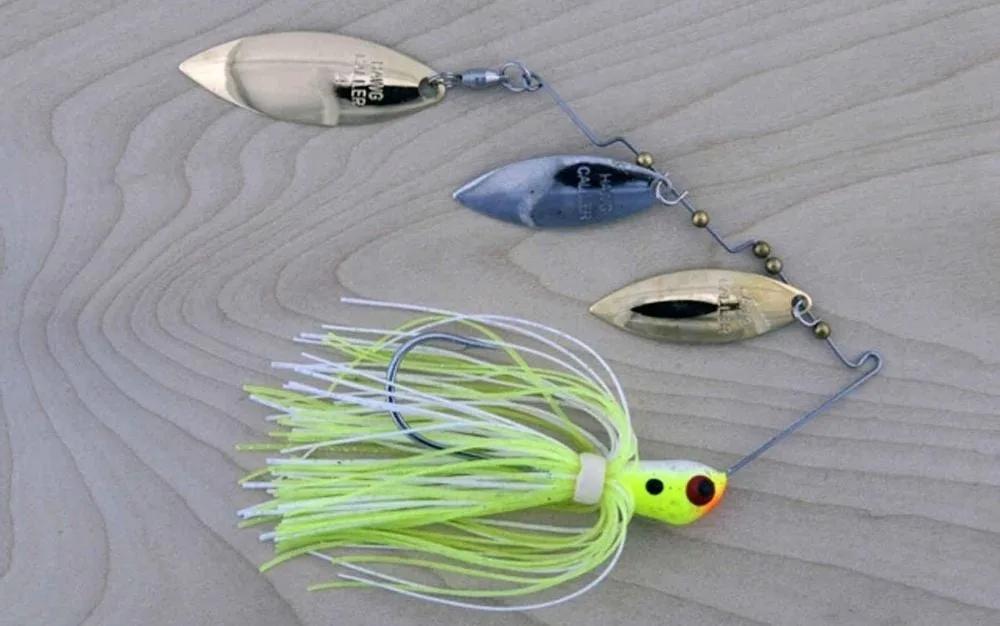
Hawg Caller’s Proven Winner
LEARN MORE
Summary
Vibration, flash and speed make this spinnerbait the best overall fall bass lure. This is especially true when it comes to targeting smallmouth, which are extra-aggressive in autumn.
Best Jig
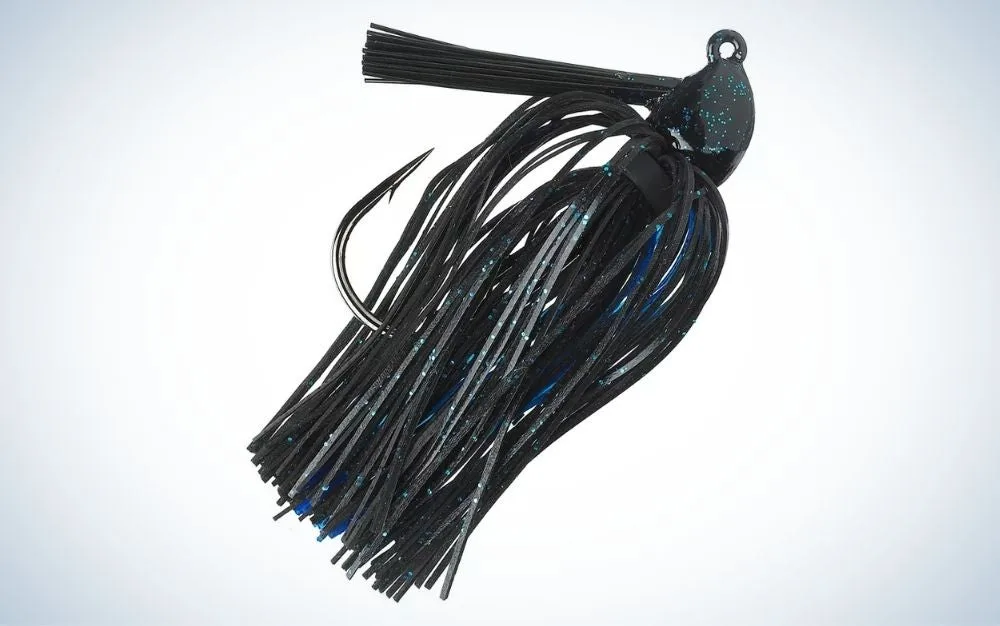
Strike King Hack Attack
LEARN MORE
Summary
Versatility makes this bottom-bouncer the best largemouth bass lure, especially in fall. It catches big bass from small spots in shallow or deep water.
The best fall bass lures are task specific. Whether it’s how they move or the colors they sport, their traits have a cumulative effect. These help you entice, and more importantly catch, bass that are moving around and chowing down. Identifying these lures requires assessing each’s performance.
The most important consideration is effective depth. While bass may start and finish autumn in relatively deep water, they spend plenty of time close to the surface, whether that’s hunkered in shallow water or schooling over open-water structure. They also need a profile and action that appeal to bass turned aggressive by falling water levels, dwindling daylight, and cooling water.
To be successful on the water, you need a selection of lures that produce bass under a variety of conditions. That’s what makes these the best fall bass lures.
Best Topwater: Heddon’s Zara Spook
Best Spinnerbait: Hawg Caller’s Proven Winner
Best Crankbait: Norman’s Deep Little N
Best Jig: Strike King’s Hack Attack Jig
How We Picked the Best Fall Bass Lures
Expectations come with each lure you rig. You want it to fly through the air without fouling, work through your chosen water and cover without hesitation, and elicit strikes from nearby bass, especially big ones. Hooking and landing them is important, too. The best fall bass lures do all of these. Finding them requires assessing each one’s characteristics, including:
Effective Depth: Will it reach the bottom or cover where bass are located?
Action: Does its movements attract bass and make them strike?
Weight and Size: Will it cast far and easily, even in a stiff breeze? Does it present a profile that satisfies aggressive bass?
Available Colors: Do they mimic the predominant forage or elicit reaction strikes?
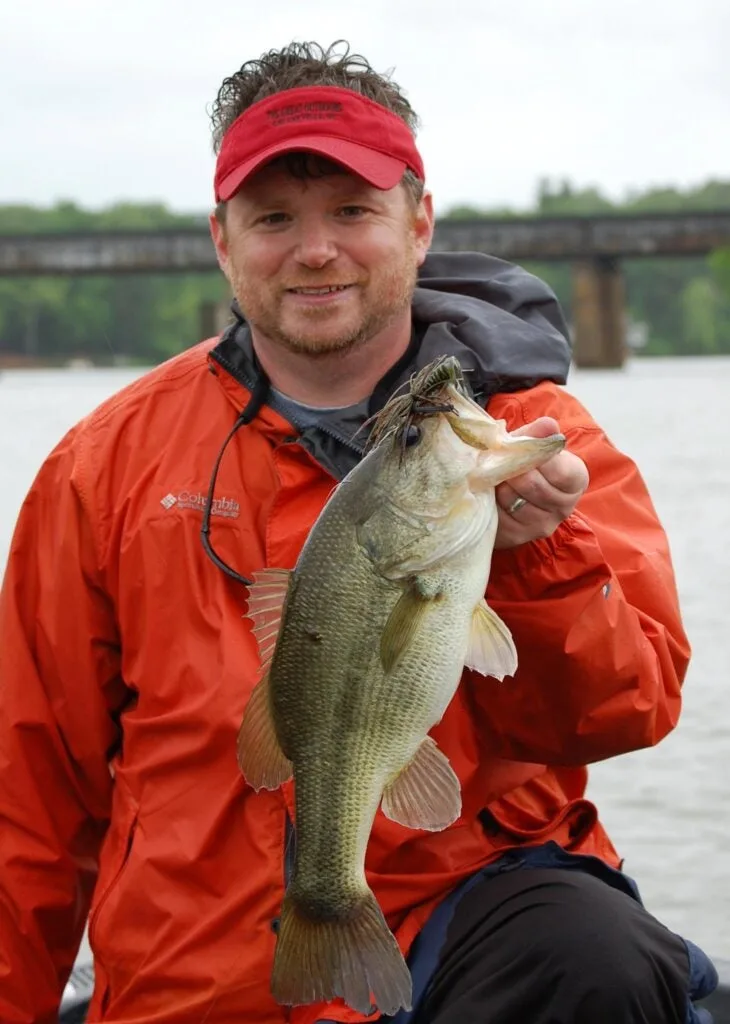
The author with a hefty largemouth. Pete Anderson
Each of the lures on this list does one or more of the above extremely well. Finding them has taken me years of on-the-water experience. But now they bring success as soon as I see the current conditions. Frosty mornings that turn into warm afternoons, for example, mean crankbaits will catch reservoir largemouth chasing schools of shad in the back of creeks or on shallow flats. Recognizing that and other situations — and responding appropriately — puts you further ahead.
Best Fall Bass Lures: Reviews and Recommendations
Best Topwater: Heddon’s Zara Spook
Best Topwater

Specs
Effective Depth: Surface
Action: Rhythmic
Colors: Baitfish, such as flitter shad or bone, and unnatural
Weight and Size: 3/4 ounce, 4.5 inches
Pros
Easy to create “walk the dog” action
Lifelike pattern and colors mimic baitfish
Weight and aerodynamic shape casts well, even on windy days
Cons
Bass can leverage its weight to throw hooks
Needs better hooks and split rings
With a pedigree that starts in the 1920s, Heddon’s Zara Spook remains a reliable option for catching bass, including big ones in the fall. Short downward twitches of your rod’s tip and a bit of slack line bring it to life in “walk the dog” fashion. It fishes in most wave conditions, from flat calm to rollicking rollers, when smallmouth will exit the side of waves to eat it.
Zara Spooks are built for intercepting wolf packs of smallmouth, which hunt baitfish around aquatic vegetation or large boulders on hard-bottomed flats along the bank or on top of offshore shoals. It works equally well for largemouth and spotted bass that have pushed shad or herring to the surface on southern reservoirs. Your only decision is which baitfish pattern to use.
While a Zara Spook is ready right from the box, a few tweaks will improve it. Replace its stock hooks with high-quality versions. They’re super sharp, grabbing bass that simply swipe at your lure. Choose ones that match the size or weight of the originals to preserve action. And rather than directly attaching them to its old-fashioned hangers, insert a split ring in between. It eliminates leverage, which bass can use to throw the heavy topwater.
Best Spinnerbait: Hawg Caller’s Proven Winner
Best Spinnerbait

Specs
Effective Depth: Surface and mid-depth
Action: Rhythmic
Colors: Baitfish, such as chartreuse-and-white skirt and silver and gold blades, and unnatural
Weight and Size: 1/2-ounce, No. 4 and No. 4.5 willow-leaf blades
Pros
Vibration and flash draw bass from long distances
Willow-leaf blades offer speed, lift and little resistance
Weight keeps bait from rolling over during fast retrieves
Cons
Thin-wire frame lacks durability
Effectiveness is limited by water temperature
Speed makes this spinnerbait a killer in fall. You can’t tow it too quickly for smallmouth swimming in clear water during the season’s first half, when the water is warmest. While they’ll continue to blast it as water cools into the high 50s, spots and largemouth will be ready for something slower.
The tandem willow-leaf blades of the Hawg Caller’s Proven Winner slice through the water, creating plenty of flash and enough vibration. While Colorado blades would make a larger disturbance, their increased resistance slows your retrieve. Save them, along with the best Chatterbaits
, for spring when runoff dirties shallow water.
and others, the Proven Winner creates most of its action with its frame. This is bent from thin-diameter wire, in this case .032 inch. It amplifies its blades’ flash and vibration, attracting bass from great distances, even in stained water. All that thin-wire good does come with some bad — lack of durability. A few jumps and surges are all a 4-pound smallmouth needs to turn one into something resembling a pretzel. You can bend it back into shape and continue fishing, but each repair costs some strength. Fix and fish it long enough, and eventually you’ll get the line tie and blades while a bass swims off with the rest.
Like spinnerbait action? We put together a lineup of the best spinnerbaits
out now to catch bass year-round.
Best Crankbait: Norman’s Deep Little N
Best Crankbait
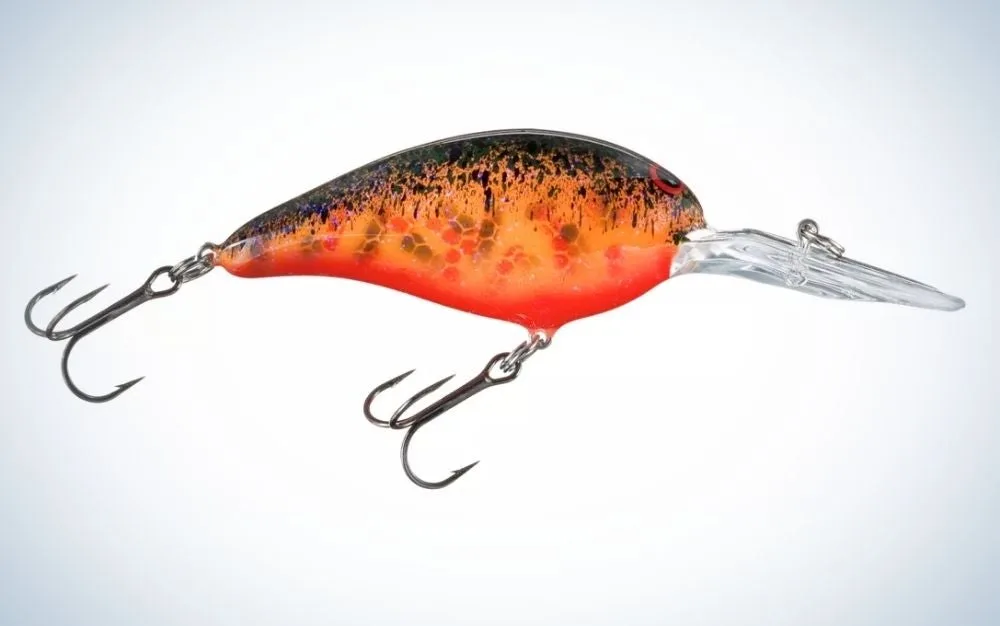
Specs
Effective Depth: Mid-depth
Action: Erratic
Colors: Baitfish, such as chartreuse blue or lavender shad, and unnatural
Weight and Size: 3/8 ounce, 2.5 inches
Pros
Wobble appropriate for warm and cool water
Longer bill fights off snags
Loud rattle attracts bass
Cons
Diving angle limits use in shallow water
Crankbaits catch bass year-round. But they shine in fall, when bass chase baitfish at different depths and around different types of cover, including riprap and laydowns. The Deep Little N catches plenty of largemouth and spots, but it’s the best smallmouth bass lure when cranked along the edge of rocky flats, especially when clumps of aquatic vegetation are in the mix.
The Deep Little N works at any retrieve speed. It has a medium wobble, similar to Bandit Lures’ 300 Series
, splitting the difference between winter’s tight-wigglers and summer’s wide-wobblers. It’ll dive to about 10 feet when tied to a small-diameter line such as 10-pound test monofilament. You’ll get a foot or two more by stepping down to 8-pound test, as long as your nerves and a lack of cover allow it. That will keep it around bass for almost all of fall.
This crankbait has few shortcomings. While its long narrow bill deflects off hard cover — wood, rock and even dock posts — well and nearly eliminates snags, it likes to dig. So, it struggles in shallow water, forcing you to slow down too much.
You can also check out our roundup of other top crankbaits
for more options.
Best Jig: Strike King’s Hack Attack Jig
Best Jig

Specs
Effective Depth: Mid-depth and deep
Action: Hopping
Colors: Crawfish, such as Texas craw or green pumpkin craw
Weight and Size: 1/2 ounce
Pros
Effective in all depths
Bulky profile attracts big bass
Rarely snags, regardless of cover
Cons
Takes time to present properly
Bass must be locked on or in cover
The Hack Attack Jig is offered in a 3/8-ounce version, but you’ll get more from this one, which packs versatility within its extra weight. Its quicker fall, for example, appeals to largemouth turned aggressive by cooling water. It’s the opposite of summer, when fishing pressure forces you into finesse fishing and picking the best Senko worm
.
Tie on a Hack Attack at fall’s start, picking apart the inside edge of aquatic vegetation beds, and keep throwing it until the end, when most bass relocate to sharp bottom contours. This 1/2-ounce jig sinks straight, keeping it from gliding away from bluffs and steep drop-offs. You can adjust its rate of fall with soft-plastic trailers; ones that are large or create more action, for example, perform like a parachute.
It’s an efficient lure, thanks to a 30-degree line tie and head that’s narrow enough to shed aquatic vegetation and wide enough to avoid wedging between rocks. And while those traits may spur you to fish fast, you need to give the Hack Attack, outfitted with a silicone skirt that attractively flares at rest, time to work. Cast, pitch or flip it to a particular spot, and let it hit bottom. Work it with short hops, pauses and drags completely through where you think a largemouth is waiting. Set the no-flex hook when you feel that tell-tale bump.
What to Consider When Choosing Lures for Fall Bass
Every lure has a unique action, size and color that catches bass best in a certain situation. While there will always be that one angler who finds success in an off-the-wall application, taking a “right one for right now” approach leads to more consistent and improved catches. So, consider these traits when selecting the best lures for fall bass.
Effective Depth
While bass are relatively shallow during most of fall, they will feed and hold at various depths depending on available cover and structure, prey availability and current conditions such as water clarity and temperature. You need lures that reach bass wherever they swim.
Surface: The top six inches of the water column. Topwaters reign in this region, where bass school to feast on baitfish. Spinnerbaits and select crankbaits are good choices, too.
Mid-depth: Six inches to five feet deep. While fall bass chase baitfish in these depths, they also take advantage of rocks, rooting for crawfish. Spinnerbaits and crankbaits are best, but jigs play, too.
Deep: Five feet to 15 feet. Here’s where you’re most likely to find early and late fall bass, which give equal attention to baitfish and crawfish. Use a jig or crankbait to catch them.
Action
Getting your lure to the bass is your first goal. Then you need to make them bite. A lure’s action handles most of that responsibility. Different fishing situations require different actions. These do best in the most familiar fall fishing situations.
Rhythmic: Whether it’s the throb of a rotating spinnerbait blade, sashay of a walking topwater or vibration of a lipless crankbait (such as a Cotton Cordell Super Spot
), this quick and steady motion draws bass from great distances, especially in shallow water that’s clear or slightly stained.
Erratic: This action triggers bass by courting their natural curiosity. Prime examples are a topwater popper’s inconsistent starts and stops or a crankbait hunting along bottom, randomly deflecting off cover in the process.
Hopping: This up, down, rest, repeat action is best for bass feeding on contour-crawling crawfish. It’s easiest to create with jigs and best for fishing vertical structure such as sharp breaks and bluffs, which are preferred by bass at autumn’s end.
Colors
Lures are available in an almost endless selection of colors and patterns. And that’s before you add your personal touches with paint, dye, and other materials. Focus on fall bass by limiting yourself to three patterns, which mimic predominant prey or trigger reaction strikes
Baitfish: Dark-colored backs and light-colored bellies, often with a bit of bright color. These imitate yellow perch in northern fisheries and shad in southern ones.
Crawfish: Shades of brown and green pumpkin with a sprinkling of glitter or splash of paint: orange, red, blue, purple, or black. Go lighter in clear water and darker in stained water.
Unnatural: Neon colors, such as chartreuse or bubblegum pink, or gaudy combinations such as fire tiger. This pattern is particularly effective for smallmouth and spotted bass, which always seem ready to fight.
Weight and Size
Bigger is better when it comes to the best fall bass lures. Some mimic baitfish
, for example, which have had all summer to grow. They satisfy cold-blooded bass’ urge to pack on pounds in order to survive near dormancy in winter’s cold water. They help you, too. Big lures are usually heavy, making them easy to cast on blustery fall days. You also can cast them far, covering more water with less effort.
FAQs
Q: Is bass fishing good in the fall?
Bass fishing is good — and often great — in the fall for many reasons. Cooling water, less daylight and changing weather draw bass to shallow water, where they’re easier to access. They become aggressive, feasting in preparation for winter. They will chase down and smash lures, even large ones pulled with speedy retrieves.
Many bass will congregate on a few spots in fall, so it may take time to find them. The best part may be having more of your favorite water to yourself as other anglers exchange their rods for rifles or shotguns and go hunting.
Q: What do bass feed on in the fall?
Bass primarily feed on baitfish and crawfish in the fall. Baitfish school in fall, often heading to shallow water in search of the best conditions. Largemouth and spotted bass will feast on these schools of shad and herring in Southern reservoirs. Smallmouth will tail schools of yellow perch, shiners and other minnows in northern natural lakes and rivers.
As fall winds down, all three species search out structure that quickly falls into deep water and hard cover, such as rock, where they feed on crawfish.
Q: Where can I find big bass in the fall?
Big bass are usually found on isolated pieces of cover in the fall. Early in the season, they cling to objects in shallow water such as a lone boat dock, single stump or rock situated along the shallow edge of aquatic vegetation. As the water cools and winter approaches, they swim toward deep water. Look for them around short secondary points at the mouth of creek arms, main-lake drop-offs or rock piles along the deeper edge of aquatic vegetation beds.
Best Fall Bass Lures: Final Thoughts
Choosing the best fall bass lures boils down to recognizing where bass are holding on a particular day and how to make them strike. Prepping a lure selection fine-tuned to meet any situation will help you catch more and bigger bass, wherever your fall fishing trips take you.
Why Trust Us
For more than 125 years, Field & Stream has been providing readers with honest and authentic coverage of outdoor gear. Our writers and editors eat, sleep, and breathe the outdoors, and that passion comes through in our product reviews. You can count on F&S to keep you up to date on the best new gear. And when we write about a product—whether it’s a bass lure or a backpack—we cover the good and the bad, so you know exactly what to expect before you decide to make a purchase.





